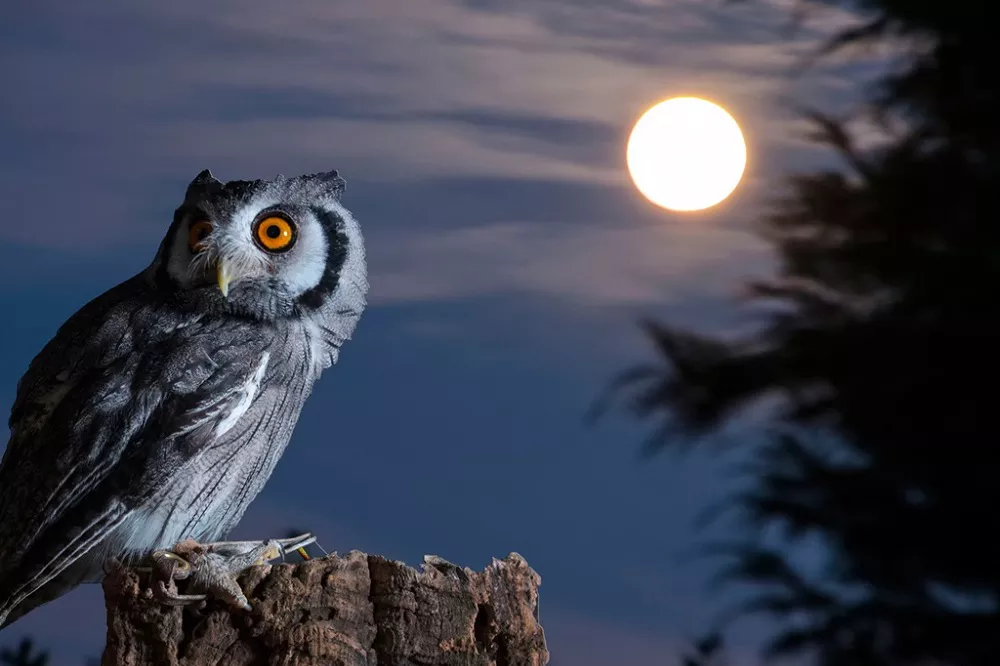Owls, with their mysterious allure and silent flight, are fascinating creatures of the night. These nocturnal predators have evolved remarkable adaptations that allow them to hunt and capture prey under the cover of darkness. One question that often arises is, “What do owls eat at night?” In this article, we will delve into the nighttime feeding habits of owls, exploring their diet, hunting strategies, and the unique adaptations that enable them to become skilled hunters of the night.
Owl Diet Diversity:
Owls are carnivorous birds of prey, and their diet varies depending on their species, habitat, and geographical location. While specific preferences may differ, owls typically consume a range of small to medium-sized vertebrates and invertebrates, including:
- Rodents
Rodents, such as mice, voles, and rats, form a significant portion of an owl’s diet. Owls are highly effective at hunting these small mammals, using their exceptional hearing and silent flight to locate and capture them.
- Birds
Certain owl species also feed on birds, including songbirds, waterfowl, and occasionally even other raptors. Owls can ambush their avian prey from above, silently swooping down to catch them unaware.
- Insects and Invertebrates
While owls primarily target vertebrate prey, they also consume a variety of insects and invertebrates. This can include beetles, moths, grasshoppers, and even small reptiles and amphibians.
- Fish
Some owl species, such as the fishing owl, have adapted to include fish in their diet. These owls reside in wetland habitats and employ their impressive fishing skills to snatch fish from the water’s surface.
Owl Hunting Strategies:
Owls have developed exceptional hunting strategies that allow them to efficiently locate and capture prey in the dark. These strategies include:
- Silent Flight:
Owls possess specialized feathers that aid in silent flight, enabling them to approach prey without creating noise. The serrated edges of their flight feathers help to break up turbulence, reducing the sound of their wingbeats and allowing them to surprise their prey.
- Incredible Hearing:
One of the most remarkable adaptations of owls is their exceptional hearing. They have asymmetrical ear openings, with one ear positioned higher than the other. This arrangement helps them locate prey through sound triangulation. Owls can accurately pinpoint the source of a sound, even in complete darkness, allowing them to strike with precision.
- Keen Eyesight:
While owls are renowned for their acute hearing, they also have excellent eyesight. Their large, forward-facing eyes provide binocular vision, allowing them to judge distance accurately. This visual acuity is particularly advantageous when hunting in low-light conditions.
- Stillness and Patience:
Owls are patient hunters, often perching quietly and waiting for their prey to reveal itself. Their ability to remain still and blend into their surroundings enhances their chances of surprising unsuspecting prey.
Adaptations for Nighttime Feeding:
Owls possess unique adaptations that facilitate their nighttime feeding habits:
- Facial Disc:
Many owl species have a facial disc, a specialized arrangement of feathers around the face. The facial disc acts as a sound funnel, directing sound waves towards the owl’s ears and enhancing their hearing abilities.
- Talons and Beak:
Owls have powerful talons and sharp beaks designed for capturing and dispatching prey. Their talons are strong and curved, allowing them to grip their prey tightly, while their beaks are sharp and hooked, facilitating efficient tearing and consumption.
- Digestive System:
The digestive system of owls is adapted to handle the unique demands of their carnivorous diet. They have a two-chambered stomach, with the first chamber, called the proventriculus, secreting digestive enzymes to break down food. The second chamber, the gizzard, grinds the food into smaller pieces to aid digestion.
Conclusion:
Owls are skilled nocturnal hunters, specializing in capturing a variety of prey under the cover of darkness. Their diet typically consists of small to medium-sized vertebrates and invertebrates, including rodents, birds, insects, and occasionally fish. Through their adaptations, such as silent flight, exceptional hearing, keen eyesight, and specialized hunting techniques, owls have become formidable predators of the night. Exploring their nighttime feeding habits provides us with a deeper understanding and appreciation for these captivating creatures and their crucial role in maintaining the delicate balance of ecosystems.
Related topics:
- The Largest Owl In The World: Eurasian Eagle-Owl
- Do Owls Eat Plants?
- What Birds Sound Like Owls?
- How Do Owls Sleep?


 Facebook
Facebook  Instagram
Instagram  Youtube
Youtube 